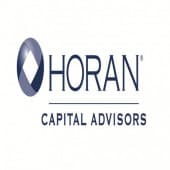Janet Yellen's Jackson Hole comments on Friday did not do any favors for the performance of income focused investments. The Fed chairman's comments led market participants to believe a rate hike for September is back on the table and at least more likely in December. The rate hike fear continues to put downward pressure on income focused investments which some investors view as bond substitutes. So far in the month of August the SPDR S&P Dividend (NYSE:SDY), the iShares US Real Estate (NYSE:IYR) and the Utilities Select Sector SPDR (NYSE:XLU) are all underperforming the broader S&P 500 Index. Also, for the month of August these three ETFs are showing negative total returns with XLU down 2% on Friday alone. 
The site, ETF.com, reported the utility sector ETF was among the top 10 ETFs experiencing outflows for the week, withdrawals totaling $263 million. 
The market seems to be signaling a rate increase is near as the yield curve continues to flatten. As the below chart shows, the yield curve has been flattening since the first quarter of 2014. Subsequent to the Fed's December 2015 hike (yellow line) the yield curve has flattened further (magenta line). Economists closely watch the yield curve as an inverted one (short rates higher than long rates) has a tendency to be a leading indicator of economic recessions, but not always. 
Below is a different look at the yield curve, 10-Year US Treasury minus 2-Year US Treasury. An inverted curve is when the line falls below zero and an inverted curve preceded the last recession. 
Friday's second estimate on GDP of 1.1% continues to show a soft economic growth environment. Two positives from the report are a strong 4.4% annualized growth rate in consumer spending and an inventory draw down that reduced GDP by 1.3%. This inventory draw down is positive for future production and employment. The inventory and consumer spending results are two variables that likely influenced the Fed's decision to signal a rate hike sooner versus later. The Fed is likely to view strong employment reports next week as enough additional evidence to raise rates, if not in September than possibly at least one time before year end. These higher rates, if they materialize, are likely to pressure income focused investments further.
